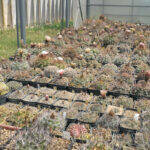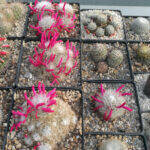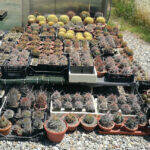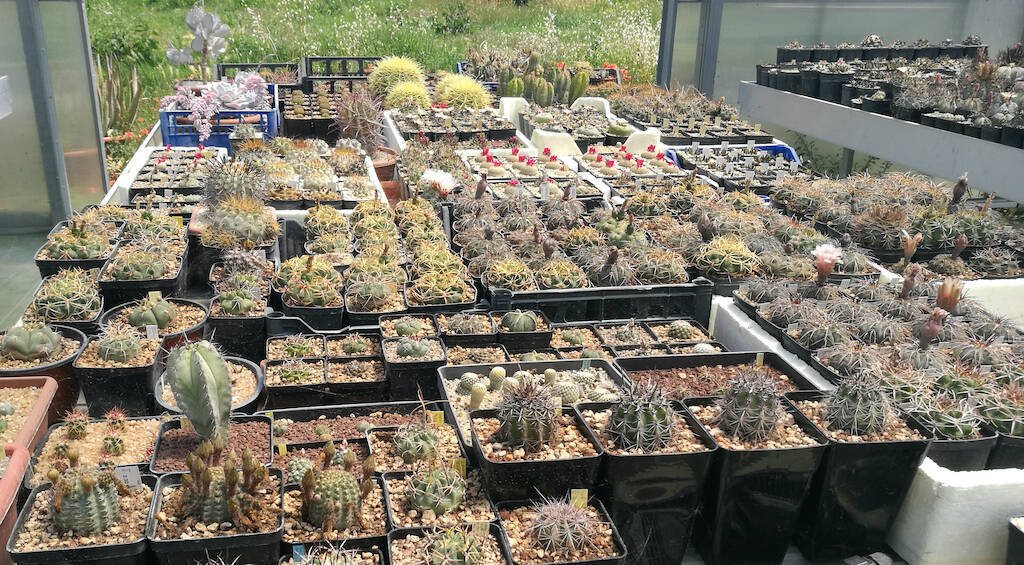Even in Northern Italy or, generally speaking, in Europe, September is usually a good time for cacti and succulent plants in general. Temperatures drop considerably, there is still plenty of light, and many plants start to vegetate again after the slowdown or stagnation of August when the highs are very high, and many succulents stop to save energy. However, September is also an important month ahead of the fall and winter season, when cacti and succulents stop growing altogether and allow themselves a long period of “rest” while waiting for the new growing season. It’s therefore decisive to accompany the plants on their journey and make the right treatments to arrive in the fall with healthy specimens and ready for the months of drought. Fundamental, for example, is the irrigation regime in this period.
In this article, we see what you need to do this month for keeping cacti and succulents in perfect health, even preparing them for winter diminishing the risk of rot and loss. (…)
In August, for several years now, I suspend watering altogether. In the greenhouse, temperatures easily exceed 40 degrees Celsius, and many cacti slow down or stop growing because of the phenomenon known as “estivation”. Many species keep to flower regularly (e.g. Gymnocalycium, Ferocactus and some Mammillaria), but it doesn’t mean that the growth’s rate has not slowed down. That’s why I prefer to avoid watering all my plants, except the leafy succulents, and let them follow their natural rhythms. This prevents the soil from staying wet for too long when the plant is in dormancy, and it causes root or collar rot.
Watering

The last watering of the summer is usually at the end of July for all my cacti, especially for those with particular growth rates, such as Copiapoa and Neoporteria, for which I stop watering even earlier, in mid-June. At the beginning of September, I start watering all my plants again, thinning them throughout the month and watering them every ten days at the most. The actual cessation of watering usually coincides with the beginning of October to give the soil time to dry out totally and for the cacti to reduce their internal water reserves and start preparing for autumn and winter. This is true for adult plants: for seedlings and one or two-year-old plants, I extend the watering period until mid-October, but water sparingly. I pay particular attention to plants of the genus Ariocarpus, which I water until mid-September at the latest. These plants, which have tap roots, are sensitive to humidity and have considerable water reserves, and I have learned that with the climate of Northern Italy, characterized by very wet and often cold winters, it’s suitable to stop watering earlier. The plants are not affected at all and do not deflate until late in the winter. Moreover, they bloom abundantly from mid-autumn to the first half of December.
Fertilizations

In September, as far as fertilizing is concerned, it’s better to give the last coat with a specific product (here is an article dedicated to fertilizers for cacti and succulents). You can have a first watering at the beginning of September with only water and add fertilizer in low dosage at the second watering, after about ten days. Fertilizing in September is helpful for the plants: it gives them the nutrients they need to get stronger before the winter break and helps the blooms when they resume in the spring. I generally limit myself to single fertilization in September, but it is possible to fertilize a couple of times before the watering stops, as long as low doses are used. Again, the situation is slightly different for seedlings and young plants (one or two years old): for these, I add fertilizer during the last watering in October to “push” them a bit and strengthen their growth.
Treatments
September is also the month of preventive treatments against parasites and diseases. Since the plants start to vegetate again, it is not recommended to use copper-based fungicide (which slows down the growth), which should be sprayed instead in the autumn months and only on warm and windy days. Some spray with copper fungicide throughout the winter, once or twice a month to prevent the proliferation of fungi or “rust”, but for several years I limit myself to a couple of passes in October and a couple of passes in February, just before the recovery. In September, however, it’s advisable to add a broad-spectrum fungicide to the water for watering and spraying the plants a couple of times with an acaricide or Neem oil, a preventive measure against aphids, mealybugs and other pests.
Checks
It’s important to carefully check the plants to identify those suffering and isolate them immediately to prevent them from spending the fall and winter months in contact with healthy plants. In this way, you can preclude the risk they may transmit diseases that can spread with the humidity that usually there’s in autumn.
Repotting
Finally, stop repotting. For several years now, I have avoided repotting (except for plants in severe pain) in September when cacti and succulents are vigorously vegetating again and in October and November. While repotting can generally be done almost any time of the year, I prefer not to “disturb” my plants at this time of year to avoid the stress of repotting in the crucial phase of preparation for autumn and winter. On the other hand, repotting can be done without problems when the plants are in stasis, i.e. in late winter or, better yet, towards the end of winter, just before vegetative recovery.
All about the repotting in this section of the site.
Also, by repotting plants before the end of winter, we will be sure that several weeks will pass between repotting and the first watering, thus giving any roots that may have been damaged or cut during repotting plenty of time to heal before wetting the soil.
Plants in outdoor

The plants I keep outside the greenhouse during the growing season finally stay in place, exposed to direct sun and weather, until mid-October if the early fall is not particularly rainy. At that point, I move everything back inside the greenhouse, which I leave open until the end of November. In fact, if the temperatures are not too low, it’s essential to give the plants all the air possible even in autumn and winter, opening the greenhouses for a few hours on the hottest and most ventilated days. This simple expedient very much reduces the risk of onset and spreading of fungal pathologies. The “toughest” plants, such as Ferocactus and Echinocactus, will return to the outside of the greenhouse from the middle of March to help them get used to the direct sun gradually and avoid sunburn.
Succulent plants and summer: everything you need to know.
SUBSCRIBE TO THE SITE – If you liked this article, subscribe to the site to have access to all the contents for one year or three months depending on the formula you choose. Here you will find terms and conditions.
SUBSCRIBE TO THE NEWSLETTER – If you want to receive the free newsletter every time new content is published (even if you have not subscribed to the site), fill in the fields at this link!
© The texts, videos, photos and graphic elaborations of the site “Il fiore tra le spine” are original material and are covered by copyright. It’s forbidden to reproduce them in any way.



